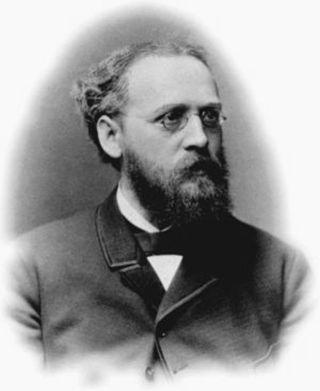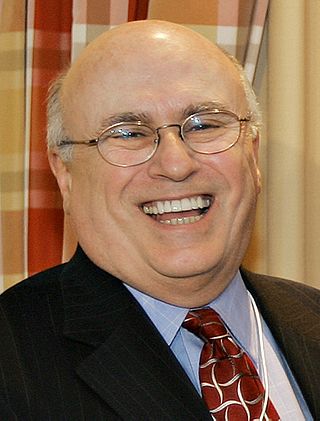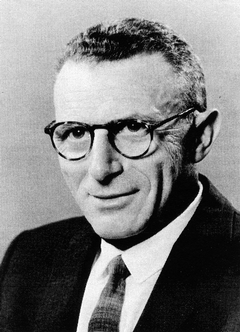
The Merck Index is an encyclopedia of chemicals, drugs and biologicals with over 10,000 monograph on single substances or groups of related compounds published online by the Royal Society of Chemistry.

The Merck Group, branded and commonly known as Merck, is a German multinational science and technology company headquartered in Darmstadt, with about 60,000 employees and present in 66 countries. The group includes around 250 companies; the main company is Merck KGaA in Germany. The company is divided into three business lines: Healthcare, Life Sciences and Electronics. Merck was founded in 1668 and is the world's oldest operating chemical and pharmaceutical company, as well as one of the largest pharmaceutical companies in the world.
Schering-Plough Corporation was an American pharmaceutical company. It was originally the U.S. subsidiary of the German company Schering AG, which was founded in 1851 by Ernst Christian Friedrich Schering. As a result of nationalization, it became an independent company. In 1971, the Schering Corporation merged with Plough to form Schering-Plough. On November 4, 2009 Merck & Co. merged with Schering-Plough with the new company taking the name of Merck & Co.

Rofecoxib is a COX-2 selective nonsteroidal anti-inflammatory drug (NSAID). It was marketed by Merck & Co. to treat osteoarthritis, rheumatoid arthritis, juvenile rheumatoid arthritis, acute pain conditions, migraine, and dysmenorrhea. Rofecoxib was approved in the US by the US Food and Drug Administration (FDA) in May 1999, and was marketed under the brand names Vioxx, Ceoxx, and Ceeoxx. Rofecoxib was available by prescription in both tablet-form and as an oral suspension.

The Merck Manual of Diagnosis and Therapy, referred to as The Merck Manual, is the world's best-selling medical textbook, and the oldest continuously published English language medical textbook. First published in 1899, the current print edition of the book, the 20th Edition, was published in 2018. In 2014, Merck decided to move The Merck Manual to digital-only, online publication, available in both professional and consumer versions; this decision was reversed in 2017, with the publication of the 20th edition the following year. The Merck Manual of Diagnosis and Therapy is one of several medical textbooks, collectively known as The Merck Manuals, which are published by Merck Publishing, a subsidiary of the pharmaceutical company Merck Co., Inc. in the United States and Canada, and MSD in other countries in the world. Merck also formerly published The Merck Index, An Encyclopedia of Chemicals, Drugs, and Biologicals.

Eugen Baumann was a German chemist. He was one of the first people to create polyvinyl chloride (PVC), and, together with Carl Schotten, he discovered the Schotten-Baumann reaction.

Richard T. Clark is a former chairman of the Merck & Co. (MSD) pharmaceutical company, a position he held from 2007 to 2011. His previous leadership positions at Merck & Co. include CEO (2005–2010), president (2005–2009) and president of the Merck & Co. manufacturing division (2003–2005).
George Wilhelm Herman Emanuel Merck was the president of Merck & Co. from 1925 to 1950 and a member of the Merck family.

Pindaros Roy Vagelos is an American physician and business executive, who was president and chief executive officer (1985) and chairman (1986) of the American pharmaceutical company Merck & Co..

Max Tishler (October 30, 1906 – March 18, 1989) was president of Merck Sharp and Dohme Research Laboratories where he led the research teams that synthesized ascorbic acid, riboflavin, cortisone, pyridoxine, pantothenic acid, nicotinamide, methionine, threonine, and tryptophan. He also developed the fermentation processes for actinomycin, vitamin B12, streptomycin, and penicillin. Tishler invented sulfaquinoxaline for the treatment for coccidiosis.

Trional (Methylsulfonal) is a sedative-hypnotic and anesthetic drug with GABAergic actions. It has similar effects to sulfonal, except it is faster acting.
Lewis Hastings Sarett was an American organic chemist. While serving as a research scientist at Merck & Co., Inc., synthesized cortisone.
Huntington Denton "Ting" Sheldon served as the Director of the Office of Current Intelligence of the US Central Intelligence Agency from 1951 to 1961, serving under Presidents Truman, Eisenhower, and Kennedy. Sheldon was the second Director of the OCI, and developed it into a major Office. Sheldon briefed all three Presidents; the President's Intelligence Check List, which became the President's Daily Brief, was developed by Richard Lehman under his direction.

Sulfonmethane is a chemical compound first synthesized by Eugen Baumann in 1888 and introduced as a hypnotic drug by Alfred Kast later on, but now superseded by newer and safer sedatives. Its appearance is either in colorless crystalline or powdered form. In United States, it is scheduled as a Schedule III drug in the Controlled Substance Act.

A GABA receptor agonist is a drug that is an agonist for one or more of the GABA receptors, producing typically sedative effects, and may also cause other effects such as anxiolytic, anticonvulsant, and muscle relaxant effects. There are three receptors of the gamma-aminobutyric acid. The two receptors GABA-α and GABA-ρ are ion channels that are permeable to chloride ions which reduces neuronal excitability. The GABA-β receptor belongs to the class of G-Protein coupled receptors that inhibit adenylyl cyclase, therefore leading to decreased cyclic adenosine monophosphate (cAMP). GABA-α and GABA-ρ receptors produce sedative and hypnotic effects and have anti-convulsion properties. GABA-β receptors also produce sedative effects. Furthermore, they lead to changes in gene transcription.

Fenadiazole (INN), also known as phénadiazole (DCF) and sold under the brand names Hypnazol, Eudormil, and Viodor, is a hypnotic and sedative medication which has been used to treat insomnia but is no longer marketed. It is described as a non-barbiturate hypnotic with marked or profound hypnotic and sedative properties in animals, variable hypnotic effects in humans, additional anticonvulsant, antithermal, and spasmolytic effects, and a generally well-tolerated profile in humans. The drug was synthesized, pharmacologically characterized, patented, and marketed by the French pharmaceutical company Laboratoires Jacques Logeais between 1960 and 1962. As a hypnotic and sedative, fenadiazole has a unique oxadiazole-based chemical structure. It may be chemically related to certain other hypnotics and sedatives with atypical chemical structures.
George Walbridge Perkins II was an American diplomat who served as Assistant Secretary of State for European Affairs from 1949 to 1953 and as United States Permanent Representative to NATO from 1955 to 1957.

Merck & Co., Inc. is an American multinational pharmaceutical company headquartered in Rahway, New Jersey, and is named for Merck Group, founded in Germany in 1668, of whom it was once the American arm. The company does business as Merck Sharp & Dohme or MSD outside the United States and Canada. It is one of the largest pharmaceutical companies in the world, generally ranking in the global top five by revenue.

Omarigliptin (MK-3102) is a potent, long-acting oral antidiabetic drug of the DPP-4 inhibitor class used for once-weekly treatment of type 2 diabetes and currently under development by Merck & Co. It inhibits DPP-4 to increase incretin levels, which inhibit glucagon release, which in turn increases insulin secretion, decreases gastric emptying and decreases blood glucose levels.

Molnupiravir, sold under the brand name Lagevrio, is an antiviral medication that inhibits the replication of certain RNA viruses. It is used to treat COVID-19 in those infected by SARS-CoV-2. It is taken by mouth.















